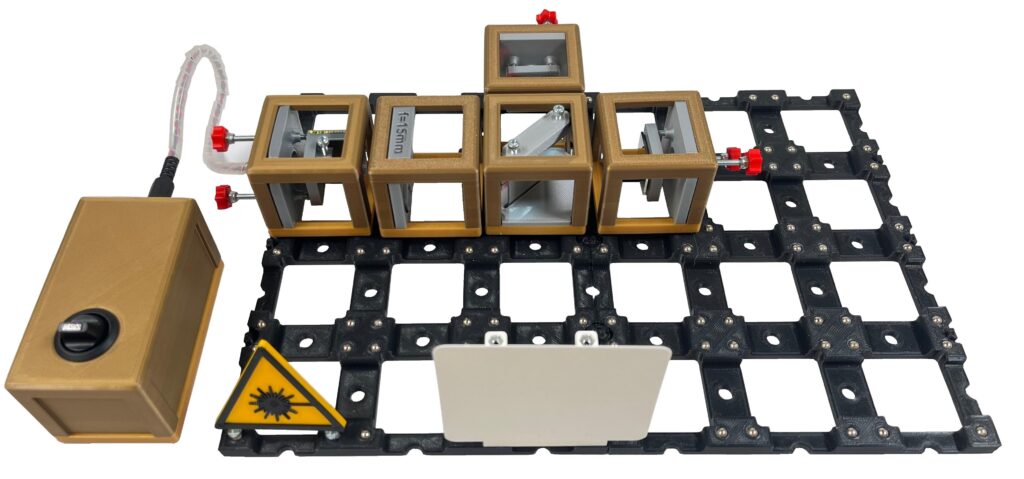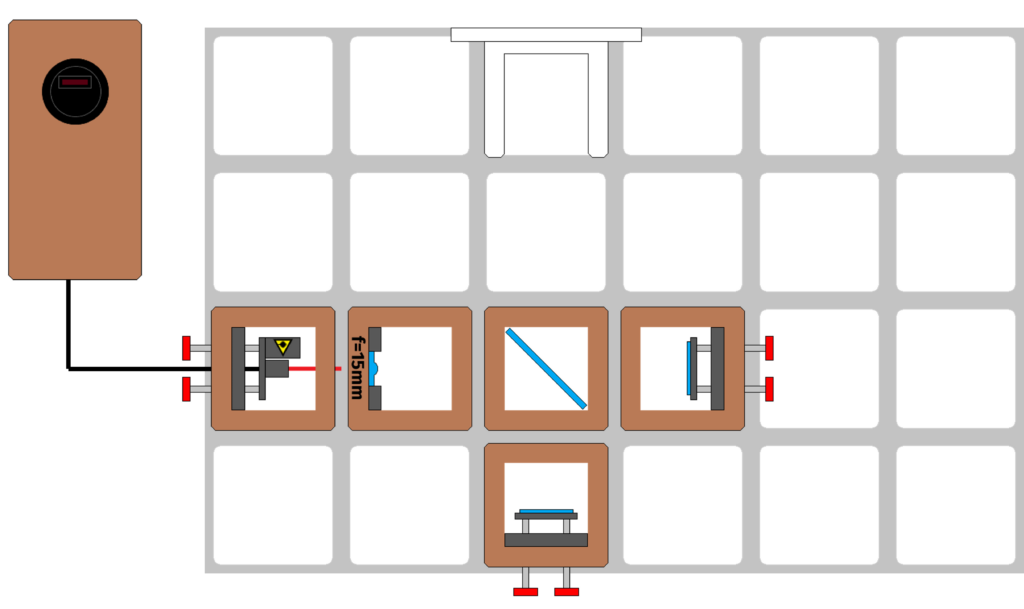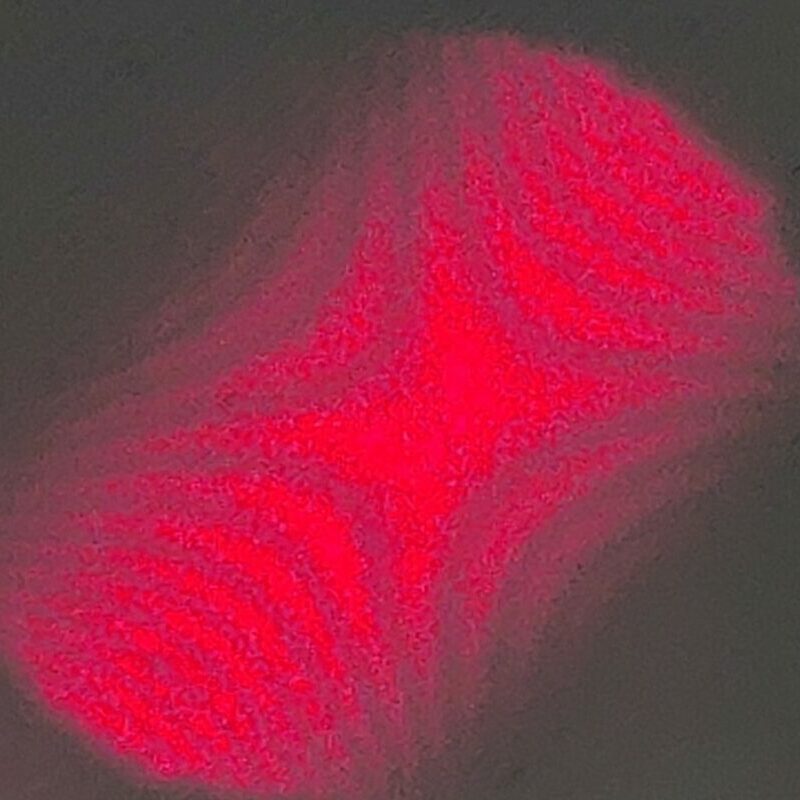
The Michelson interferometer is one of the best-known interferometers and is comparatively easy to set up and adjust. It can be used in lessons, for example in the context of interference of light or the theory of relativity (keyword: light ether experiment), to clearly convey basic physical principles.
On this page you will find all information about the structure, special features and measurement possibilities of the modular Michelson interferometer as well as working materials for use in the classroom.
Structure
Schematic Structure

Required modules:
- Laser diode (USB) or Laserdiode
- Battery box
- Lens
- Beamsplitter
- 2x Mirror (90°)
- Screen
- Baseplate (min. 4×4)
- (Possible pinhole)
Here you will find the complete component and order list.
Special Features
Different lenses:
There are different lenses in the parts list. A brief explanation of their properties:
- Acrylic glass lens with 15mm focal length: This lens has a short focal length and is particularly suitable for creating an interference pattern with high contrast and sufficient size. However, the surface quality of the lens is comparatively low, which can result in impurities in the interference pattern.
- Achromat with 26.5mm focal length: The longer focal length results in a slightly smaller interference pattern with fewer rings. However, this lens has a higher surface quality, which means that the interference pattern contains fewer impurities and appears more precise overall.
The choice of lens therefore depends on the desired properties of the interference pattern.
TO THE INTERFERENCE PATTERN:
The Michelson interferometer can produce different interference patterns.


If you calculate with ideal components, a perfectly circular pattern should theoretically result. The refractive properties of the beam splitter and the (not perfectly round) beam of the laser diode ensure that other patterns can arise. A detailed description you find here.
Measuring with the Michelson interferometer
The Michelson interferometer can be used as a measuring instrument for very small path length changes. Well-known applications include the Michelson-Morley experiment to study the ether of light, the detection of gravitational waves in modern observatories and optical coherence tomography, which is used in medicine for high-resolution imaging.

A measurement is also possible in this set. To do this, one of the mirrors is replaced by a mirror piezo module. The piezo element deforms when a voltage is applied and thus moves the mirror. This changes the interference behavior on the screen – the interference pattern moves. By evaluating this change, it is possible to calculate how far the mirror has been moved.
Schematic structure

Necessary modules:
- Laserdiode (USB) or Laserdiode
- Battery box
- Lens
- Beamsplitter
- Mirror (90°)
- Mirror piezo module
- Baseplate (min. 4×4)
Working Materials
Exemplary workbook for use in the classroom:
Workbook for the Michelson interferometer
Quick guide to adjusting the Michelson interferometer:
Quick guide to the Michelson interferometer
Available in German only
